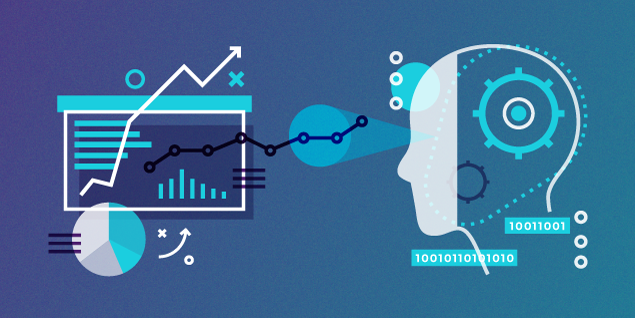Predictive AI Tool Breakthroughs: Future Insights

In a world increasingly driven by data, the ability to merely understand what has happened is no longer sufficient. The true competitive advantage lies in foreseeing what will happen. This is the domain of predictive AI tools, a revolutionary class of technologies that leverage Artificial Intelligence (AI) and Machine Learning (ML) to analyze historical data and make informed forecasts about future events, trends, and behaviors. These aren’t crystal balls; they are sophisticated statistical and algorithmic models that convert raw information into actionable foresight, enabling proactive decision-making across every conceivable industry. The breakthroughs in these tools are fundamentally reshaping strategy, risk management, and operational efficiency, marking a pivotal shift in how businesses and even individuals navigate an uncertain future.
This comprehensive article delves deep into the burgeoning world of predictive AI, exploring the core technologies that fuel its advancements and its transformative impact across diverse sectors. We will uncover how machine learning algorithms, deep learning networks, and massive datasets are converging to create systems that can anticipate everything from customer churn and market shifts to equipment failures and disease outbreaks. Our aim is to provide a detailed roadmap for understanding this exciting frontier, highlighting the benefits, the challenges, and the immense potential of leveraging predictive AI to gain unparalleled insights and drive future success.
Why Predictive AI Matters

For centuries, planning and strategy were largely based on historical patterns, expert intuition, and educated guesswork. While valuable, these methods were inherently limited by human cognitive biases and the sheer volume of data in the modern era. The advent of predictive AI tools offers a dramatic leap forward by providing a data-driven, systematic, and scalable approach to forecasting.
The shift is profound: from reactive to proactive, from guesswork to calculated foresight. Organizations that master predictive AI can:
- Anticipate Market Shifts: Identify emerging trends or potential disruptions before competitors.
- Optimize Operations: Forecast demand, predict equipment maintenance needs, or streamline supply chains to avoid bottlenecks.
- Enhance Customer Experience: Predict customer churn, personalize recommendations, or identify potential service issues before they arise.
- Mitigate Risks: Forecast financial risks, detect fraudulent activities, or predict potential security breaches.
- Drive Innovation: Uncover hidden correlations and predict future consumer needs, leading to the development of groundbreaking products and services.
- Increase Efficiency and ROI: Allocate resources more effectively by focusing on areas with the highest predicted impact.
In essence, predictive AI transforms data from a record of the past into a compass for the future, providing a powerful, almost prescient, capability that is rapidly becoming indispensable for sustained growth and resilience.
Core Technologies Powering Predictive AI
The capabilities of modern predictive AI tools are built upon advanced computational techniques and vast data processing power. Understanding these foundational technologies is key to appreciating their breakthroughs.
A. Machine Learning (ML) Algorithms
At the heart of predictive AI, ML algorithms are designed to learn from data without being explicitly programmed for every scenario.
- Supervised Learning: This is the most common type for predictive tasks. Algorithms are trained on labeled datasets (input data paired with known output answers) to find patterns and relationships. For example, training a model with past customer data (age, purchase history) and whether they churned, to predict future churners. Key algorithms include:
- Regression: Predicting continuous values (e.g., house prices, sales figures, stock prices) using linear regression, polynomial regression, etc.
- Classification: Predicting categorical outcomes (e.g., customer churn (yes/no), fraud detection (fraud/not fraud), disease diagnosis) using logistic regression, decision trees, support vector machines (SVMs), and random forests.
- Time Series Analysis: Specialized ML techniques for data points collected over time (e.g., ARIMA, Prophet), crucial for forecasting stock prices, weather patterns, or sales trends.
- Ensemble Methods: Combining multiple ML models to improve predictive accuracy and robustness, such as boosting (Gradient Boosting Machines like XGBoost, LightGBM) and bagging (Random Forests).
B. Deep Learning (DL) Networks
A subset of ML, deep learning uses multi-layered neural networks inspired by the human brain, excelling at processing complex, unstructured data.
- Convolutional Neural Networks (CNNs): Primarily used for image and video data. In predictive AI, they might analyze security camera feeds to predict anomalous behavior or image patterns for predictive maintenance.
- Recurrent Neural Networks (RNNs) / Long Short-Term Memory (LSTMs): Designed for sequential data like natural language or time series. Crucial for predicting next words in a sentence, stock market movements, or complex human behavior sequences.
- Transformers: A more recent breakthrough, particularly in NLP, enabling highly accurate language understanding and generation, with applications in predicting customer sentiment from text or forecasting communication trends.
C. Big Data Infrastructure and Processing
Predictive AI thrives on data. Handling massive, diverse datasets efficiently is critical.
- Data Lakes/Warehouses: Scalable cloud-based storage solutions (e.g., Snowflake, Amazon Redshift, Google BigQuery) that can store petabytes of structured and unstructured data, providing the foundation for training predictive models.
- Distributed Computing Frameworks: Technologies like Apache Spark and Hadoop enable the parallel processing of enormous datasets across clusters of computers, crucial for training large-scale predictive models.
- ETL (Extract, Transform, Load) Tools: Before analysis, data must be cleaned, transformed, and loaded. Tools like Talend or Informatica ensure data quality and readiness for predictive modeling.
D. Cloud Computing Platforms
Cloud providers offer scalable infrastructure and pre-built AI/ML services, democratizing access to powerful predictive capabilities.
- Managed ML Services: Platforms like AWS SageMaker, Google Cloud AI Platform, Azure Machine Learning provide comprehensive environments for building, training, deploying, and managing predictive models without significant infrastructure overhead.
- AutoML (Automated Machine Learning): These services (e.g., Google Cloud AutoML, H2O.ai Driverless AI) automate significant parts of the ML pipeline, including feature engineering, algorithm selection, and hyperparameter tuning, making predictive modeling accessible to users with less specialized expertise.
Where Predictive AI Is Making a Mark
Predictive AI tools are transforming virtually every industry by providing actionable foresight.
A. Business and Finance
- Customer Churn Prediction: Identifying customers at risk of canceling subscriptions or leaving before they actually do, allowing businesses to intervene proactively with retention strategies.
- Sales Forecasting: More accurately predicting future sales volumes based on historical data, seasonality, promotions, and external factors, optimizing inventory, staffing, and marketing spend.
- Fraud Detection: Analyzing transaction patterns in real-time to identify and flag suspicious activities that deviate from normal behavior, crucial for credit card companies, banks, and e-commerce.
- Credit Risk Assessment: Predicting the likelihood of loan default by analyzing various financial and behavioral data points, leading to more accurate lending decisions.
- Stock Market Prediction: While highly complex and challenging, AI models are used to identify patterns in market data to inform trading strategies and predict stock price movements.
B. Healthcare and Medicine
- Disease Outbreak Prediction: Analyzing public health data, social media trends, and environmental factors to predict the spread of infectious diseases, enabling public health officials to take preemptive measures.
- Patient Deterioration Prediction: Monitoring patient vital signs and medical records in real-time to predict the likelihood of adverse events (e.g., sepsis, cardiac arrest), allowing for early medical intervention.
- Personalized Treatment Recommendations: Predicting which treatments will be most effective for individual patients based on their genetic profile, medical history, and response to previous therapies.
- Drug Discovery and Development: Predicting the efficacy and safety of new drug compounds, accelerating the research and development process.
C. Manufacturing and Supply Chain
- Predictive Maintenance: Analyzing sensor data from machinery to predict when equipment failures are likely to occur, allowing for scheduled maintenance before breakdowns, reducing downtime and costs.
- Demand Forecasting: More accurately predicting consumer demand for products, optimizing production schedules, inventory levels, and logistics to minimize waste and stockouts.
- Supply Chain Optimization: Predicting disruptions (e.g., natural disasters, geopolitical events) or logistical bottlenecks, enabling proactive rerouting or resource allocation to maintain smooth operations.
- Quality Control: Predicting potential defects in products during the manufacturing process based on real-time sensor data, allowing for early intervention and reduction of waste.
D. Marketing and Retail
- Personalized Product Recommendations: Predicting what products a customer is most likely to purchase based on their Browse history, past purchases, and similar customer behavior, enhancing e-commerce experiences.
- Targeted Advertising: Predicting which advertising campaigns and channels will be most effective for specific customer segments, optimizing marketing spend and ROI.
- Customer Lifetime Value (CLV) Prediction: Forecasting the total revenue a customer is expected to generate over their relationship with a business, informing customer acquisition and retention strategies.
- Pricing Optimization: Dynamically adjusting product prices based on predicted demand, competitor pricing, and inventory levels to maximize revenue.
E. Cybersecurity
- Threat Detection and Prevention: Predicting and identifying novel cyber threats, malware, and intrusion attempts by analyzing network traffic patterns, user behavior, and threat intelligence feeds.
- Fraud Prevention: Beyond financial transactions, predicting and preventing various forms of cyber fraud, including account takeovers and sophisticated phishing attacks.
- Vulnerability Prediction: Predicting which software vulnerabilities are most likely to be exploited or which systems are at highest risk, allowing security teams to prioritize patching efforts.
What’s Making Predictive AI So Powerful Now

The current wave of predictive AI’s effectiveness stems from several key advancements that have matured in recent years.
A. Access to Massive Datasets
The sheer volume, velocity, and variety of data (Big Data) available from sensors, online interactions, social media, and transactional systems provide the raw material necessary to train highly accurate predictive models. More data generally means better predictions.
B. Increased Computational Power
The exponential growth in processing power, particularly with the advent of GPUs (Graphics Processing Units) and specialized AI chips (TPUs, NPUs), has made it feasible to train complex deep learning models on these massive datasets within reasonable timeframes.
C. Advanced Machine Learning Algorithms
Continuous research has yielded more sophisticated ML and DL algorithms that can uncover intricate patterns in data, handle noisy or incomplete information, and generalize better to unseen data. Transfer learning, for instance, allows models trained on one task to be adapted for another, accelerating development.
D. Cloud-Based AI/ML Platforms
Cloud providers have democratized access to powerful AI infrastructure and pre-built ML services. This eliminates the need for organizations to invest heavily in on-premise hardware and specialized AI talent, making predictive AI accessible to a much broader range of businesses.
E. Democratization Through AutoML and Low-Code/No-Code
Automated Machine Learning (AutoML) tools allow business analysts and domain experts, even without deep coding or ML knowledge, to build and deploy predictive models. Low-code/no-code platforms further integrate these capabilities into easy-to-use interfaces.
Strategic Implementation for Predictive AI Effectively
Deploying predictive AI tools effectively requires more than just purchasing software; it demands a strategic approach and a shift in organizational culture.
A. Define Clear Business Problems and Objectives
- Don’t start with technology; start with the business question. What specific future outcomes do you need to predict? What business value will those predictions unlock?
- Focus on problems that are clearly defined, have sufficient historical data, and where a successful prediction can lead to measurable ROI.
B. Prioritize Data Strategy and Quality
- Data is the Fuel: Predictive AI models are only as good as the data they’re trained on. Invest heavily in data collection, cleansing, integration, and governance.
- Ensure data is relevant, accurate, complete, and unbiased. Address data silos.
- Establish clear data ownership and quality control processes.
C. Build a Cross-Functional Team
- Successful predictive AI projects require collaboration among data scientists (for model building), data engineers (for data pipelines), IT (for infrastructure), and business domain experts (for context and insight application).
- Foster communication and understanding between technical and non-technical stakeholders.
D. Start Small, Learn, and Iterate
- Begin with pilot projects that have a clear scope and measurable outcomes.
- Don’t aim for perfection immediately. Deploy simpler models first, gather feedback, and then iteratively refine and enhance your predictive capabilities.
- Monitor model performance over time and retrain models as data patterns evolve.
E. Focus on Integration and Automation
- Ensure predictive insights can be seamlessly integrated into existing business workflows and decision-making processes.
- Automate the deployment and monitoring of predictive models (MLOps) to ensure they remain effective and relevant.
F. Address Ethical Considerations and Bias
- Proactively identify and mitigate potential biases in your data and algorithms.
- Ensure fairness, transparency, and accountability in your predictive models, especially in high-stakes applications.
- Establish ethical guidelines for the use of predictive AI within your organization.
Future Trends in Predictive AI Tools
The evolution of predictive AI is relentless, promising even more sophisticated capabilities and widespread impact.
A. Real-time Predictive Insights Everywhere
- The ability to generate and act on predictions in milliseconds will become standard, driven by advancements in streaming data processing and edge AI. This means real-time fraud detection, dynamic pricing, and immediate personalized recommendations.
B. Greater Emphasis on Explainable AI (XAI)
- As predictive AI becomes more pervasive in critical applications, the demand for transparency will grow. Future tools will natively incorporate advanced XAI techniques to help users understand the drivers behind predictions, building trust and enabling better decisions.
C. Predictive AI for Unstructured Data Dominance
- Breakthroughs in multimodal AI will enable predictive models to simultaneously analyze text, images, audio, and video, unlocking vastly more complex predictive capabilities from unstructured data sources (e.g., predicting sentiment from a customer’s tone of voice and facial expression).
D. Automated and Self-Optimizing Models
- AutoML will continue to advance, with AI models not only building themselves but also continuously monitoring their own performance, identifying when they need retraining, and even adjusting their parameters without human intervention.
E. Federated Learning and Privacy-Preserving Prediction
- To address data privacy concerns, techniques like federated learning will allow predictive models to be trained on decentralized data (e.g., across multiple hospitals or companies) without the raw data ever leaving its source, enabling powerful predictions while maintaining privacy.
F. Predictive AI in Digital Twins
- The combination of predictive AI with digital twin technology (virtual replicas of physical assets) will allow for highly accurate real-time simulations and predictions of system behavior, crucial for complex industrial operations and infrastructure management.
Conclusion
The breakthroughs in predictive AI tools mark a transformative era in decision-making, offering an unprecedented ability to gaze into the future with data-driven clarity. These powerful instruments, fueled by advanced machine learning, deep learning, and vast datasets, are empowering organizations to move from reactive responses to proactive strategies, anticipating shifts, optimizing operations, and delivering unparalleled customer experiences. From forecasting market trends and preventing fraud to predicting health outcomes and optimizing supply chains, the applications are as diverse as they are impactful.
While the journey of implementing predictive AI demands meticulous data strategy, cross-functional collaboration, and a strong commitment to ethical guidelines, the rewards are immense. By embracing these cutting-edge tools, businesses can unlock a visionary edge, transform uncertainty into calculated opportunity, and redefine their path to success. The future is not just coming; with predictive AI, it can be seen, understood, and proactively shaped today.







